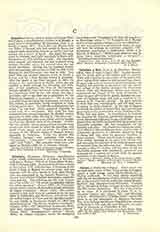

Caballero, RAIMUNDO DIOSDADO, miscellaneous writer, chiefly ecclesiastical, b. at Palma, in the island of Majorca, June 19, 1740; d. at Rome, either January 16, 1830, or April 28, 1829. He entered the Society of Jesus November 15, 1752, held the chair of literature in the Jesuit College at Madrid for several years, and was deported with the other Jesuits to Italy when the Society was suppressed in the Spanish dominions. In his new home Father Caballero developed a varied literary activity. The following are the most important of his works: (I) “De prima typogra hiae hispanim agitate specimen” (Rome, 1793); (2) “Commentariola critica, primum de discipline, arcani, secundum de lingua evangelical’ (Rome, 1798). The author corrects in this work what he considers to be the mistakes of Schelstrate and Hardouin, and proves that the native tongue of Christ and the Apostles was Syriac, not Greek, as Dominicus Diodati (d. 1801) had maintained in his “De Christo loquente exercitatio” (Naples, 1767).—(3)” Bibliothecm Scriptorum Societatis Jesu supplementa. Supplementum primum” (Rome, 1814), “Supplementum alterum” (Rome, 1816); (4) Father Caballero shows his Scriptural knowledge in his “Tetraglotton D. Marci Evangelium, et Marcologia critica”; “El Evangelio de S. Marcos escrito en Latin, griego y hebreo, con los tres alfabetos”. (5) Not to mention several historical works, we may add here his writings on American subjects: “Observaciones americanas, y suplemento critico a la historia de Mexico“; “Medios Para estrechar mas la union entre espanoles americanos y europeos”; “Considerations americanas”.
A. J. MAAS

